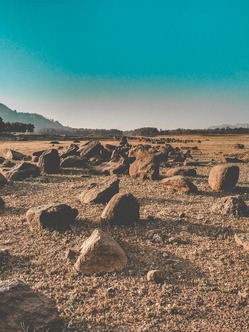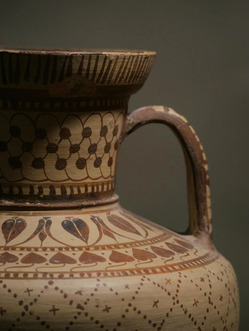Isotope Fingerprinting in Geochemical Research:
Tracing Materials Across Time and Space
In the world of geochemistry, isotope fingerprinting has emerged as a powerful tool for tracing the origins and movements of materials through time and space. By analyzing a substances’ particular isotopic signature for elements like lead (Pb) and/or strontium (Sr), researchers can unlock valuable insights into geological, environmental, and archaeological processes.
The Science Behind Isotope Fingerprinting
Every material carries a distinct isotopic signature based on the details of its formation and the history of its environmental interactions. In particular, isotopes of lead and strontium are widely used for provenance studies due to their stable and well-understood behaviors in natural systems.
Lead Isotopes: Lead has four stable isotopes. Of these, three 206Pb, 207Pb, and 208Pb, are radiogenic, the end members of the radioactive decay series of 238U, 235U, and 232Th respectively. One, 204Pb, is primordial. The relative abundance of these isotopes varies depending on the geological source, making lead an excellent tracer for determining the origin of metals, ceramics, and even environmental pollution sources.
Strontium Isotopes: Strontium has four stable isotopes, 84Sr, 86Sr, 87Sr, and 88Sr. Of these 87Sr alone is radiogenic produced from the decay of 87Rb. The strontium isotopic composition is reported as the ratio 87Sr/86Sr, and reflects the age and composition of the rocks from which they derive. Since strontium is incorporated into biological materials such as bones, shells, and plants, it serves as a reliable indicator of an organism’s geographic history and the geological makeup of the region it inhabited.
Sample Types for Isotope Analysis
Isotope fingerprinting is applicable to a wide range of sample types. Some key materials include:

- Rock and Mineral Samples: Used to establish baseline isotopic compositions of geological formations and track mineralization processes.
- Soils and Sediments: Provide insights into weathering, erosion, and pollution sources, as well as past environmental conditions.
- Water Samples (Groundwater, Rivers, Oceans): Helps the understanding of hydrological cycles, water source provenance, and contamination pathways.
- Plant Material (Wood, Leaves, Pollen): Used in ecological and climate studies to track nutrient cycling and geographic origin.
- Shells and Coral Skeletons: Record environmental and climatic conditions over time, providing a valuable archive of past marine environments.
- Ceramics and Artifacts: Help determine the raw material sources used in ancient pottery and metal objects, shedding light on trade and cultural exchange.
- Metals and Ores: Allow researchers to trace metal sources and mining activities, as well as detect pollution from historical and industrial processes.
- Food Products and Agricultural Samples: Support traceability and authentication efforts, ensuring products are sourced from their claimed geographic origins.
- Bones and Teeth: These remain valuable for studying past populations, dietary habits, and mobility patterns in archaeological and ecological contexts.

The Role of Other Isotopes
While lead and strontium are among the most commonly used isotopes for tracing materials, other isotopic systems contribute complementary insights:
- Oxygen (O) Isotopes: Variations in δ18O reflect climatic conditions and hydrological cycles, providing insights into past precipitation patterns and the movement of water bodies. This is particularly true when coupled with δD. It also provides a powerful tool for the study of water/rock interaction, with deviations of surface/groundwater from the meteoric water line typically interpreted as isotopic exchange between minerals and water and as a paleothermometer.
- Carbon (C) Isotopes: Used extensively in organic material studies,and paleoclimatology. Carbon isotopes (δ13C) inform on dietary practices, ecosystem changes, carbon cycling, and a myriad of applications from the marine carbonate record. They have also been used to estimate atmospheric and aqueous CO2 concentrations. It has been used in petroleum science to track oil and gas reservoirs.
- Boron (B) Isotopes: Boron isotopic composition (δ11B) is particularly useful in studying marine and hydrothermal systems, helping to track water-rock interactions and environmental changes over time. In marine systems it is used as a proxy for pH which has a number of applications, notably as a paleopCO2 proxy. Boron isotopes are also useful for identifying anthropogenic sources of boron (a common pollutant in surface/ground water).
Applications in Geochemistry and Archaeology
Isotope fingerprinting is applied across various fields beyond forensic science, offering valuable insights into material provenance and environmental reconstructions:
- Archaeological Provenance: By comparing the isotopic composition of artifacts, human remains, or construction materials to regional geological baselines, researchers can determine trade routes, migration patterns, and resource sourcing in ancient societies.
- Environmental Monitoring: Lead isotope analysis is used to trace pollution sources, distinguishing between natural background levels and anthropogenic contaminants, such as those from mining, industrial processes, or historical leaded gasoline.
- Geological and Hydrological Studies: Strontium and oxygen isotopes provide information about past climate conditions and water sources, aiding in the reconstruction of hydrological cycles and weathering processes over millennia.
- Agriculture and Food Provenance: Strontium isotope ratios help authenticate the geographic origin of agricultural products, ensuring food traceability and protecting against mislabeling or counterfeit goods.
Conclusion
Isotope fingerprinting is a transformative tool for understanding the movement, origin, and history of materials in the natural world. By leveraging the unique isotopic signatures of elements such as lead and strontium, researchers can address questions across archaeology, environmental science, and geology. As analytical techniques continue to evolve, isotope geochemistry will remain at the forefront of scientific exploration, providing increasingly refined insights into Earth’s past and present dynamics.
Image references
Landscape: https://www.pexels.com/photo/rocks-near-trees-and-mountains-793778/
Ceramics: https://www.pexels.com/photo/an-ancient-vase-with-a-pattern-on-it-17918403/
